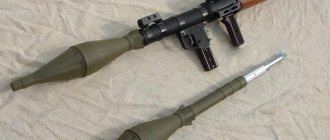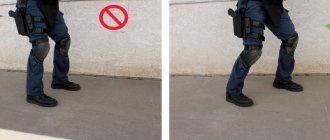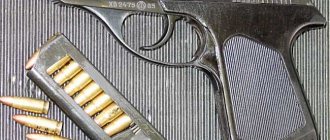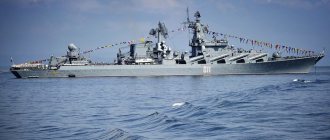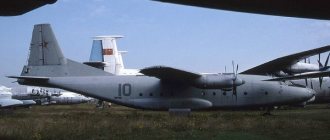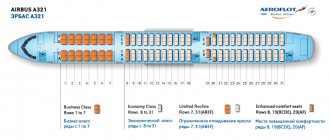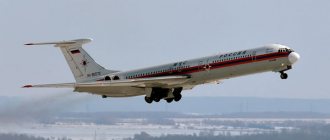This term has other meanings, see R-5 (missile).
R-5 Description Purpose Multi-purpose Crew, persons. 2 First flight September 19, 1928 Start of operation 1929 Manufacturer Dimensions Length 10.56 m Wingspan 15.30/12.60 m Height 2.62 m Wing area 50.20 m² Weight Empty 1969 kg Loaded 2955 kg (reconnaissance aircraft) 3347 (bomber ) Max. take-off Powerplant Engine PD M-17b M-17f Thrust (power) 500/680hp 500/730 (M17f) Characteristics Max. speed 225 km/h (M-17f) 235 km/h (SSS) Combat radius - km Flight range 800 km / 1000 km (R-5 manufactured in 1934) Service ceiling 6400 m / 5940mR-5 manufactured in 1934 Rate of climb 295 m / min Armament Machine gun armament 2x7.62 mm PV-1 1 PV-1 + 1 ShKAS, 7.62mm YES Number of hardpoints Ventral 2xDER-6 Wing 8xDER-7 Suspended weapons 400 kg bombs R-5
- Soviet multi-purpose single-engine aircraft of the 30s, created at the Polikarpov Design Bureau in 1928. One of the most popular biplane aircraft of the 30s of the XX century in the USSR. More than 1000 were operated by the Civil Air Fleet (Aeroflot) as postal and cargo-passenger aircraft. More than 5,000 in the Red Army, where it was the main model of reconnaissance aircraft, light bomber and attack aircraft until the early 40s of the 20th century. Had many options. A rational design with a large margin of safety ensured its long life in the air - it flew until the end of the 40s. He took part in all armed operations of the Red Army in the 30s and early 40s. On the fronts of the Great Patriotic War it was used as a communications and light transport vehicle until 1944. Delivered to Republican Spain, Iran, Turkey and Mongolia. In the Air Force of Republican Spain he received the name “Rasante” [1] - “slow flight” and was one of the “heroes” in the battle for Guadalajara, taking an active part in the defeat of the Italian mechanized “Blue Division”.[2]
Development history
In 1933, TsAGI began designing the long-range maritime reconnaissance aircraft MDR-4 (ANT-27).
The basis for the development was the experimental MDR-3 seaplane designed by I. V. Chetverikov, produced in 1932. MDR-4 was a 3-engine high-wing aircraft with a cantilever wing. By reducing the specific load on the wing, it was possible to increase the rate of climb and service ceiling. The aircraft was designed as a long-range reconnaissance aircraft, a heavy bomber and a 14-seat passenger aircraft. In the reconnaissance version, the crew included 5 people: a navigator (who also served as a forward gunner), two pilots, a flight mechanic and a rear gunner. In the bomber, they were supplemented by a radio operator-bombardier and a cannon gunner.
A prototype seaplane was built in March 1934 and sent to Sevastopol for testing. The first flight took place on April 8. The aircraft was tested by pilots T.V. Ryabenko, A.A. Volynsky and TsAGI designer I.I. Pogossky. The aircraft as a whole passed the tests successfully. Among the shortcomings, unusual behavior during takeoff was noted. On April 15, the seaplane collided with a high wave on takeoff and crashed. 4 people died.
Tests were continued on the second copy, designated ANT-27bis. Its first flight took place in October 1934. Tests continued until March 1935. Good flight and hydrodynamic characteristics and ease of control were noted. It was recommended to accept the aircraft into service after eliminating a number of shortcomings. One of the recommendations was the installation of new high-altitude M-34N engines. After its installation, the maximum speed reached 266 km/h, and the service ceiling was 6550 m.
On September 23, 1935, a new disaster occurred that claimed the lives of three people. However, a decision was made to mass production. Official adoption took place in 1936. Taganrog Plant No. 31 was instructed to build 16 aircraft by the end of the year. On April 29, 1936, the lead aircraft of the series entered testing.
Due to workload, the Taganrog plant produced only 5 aircraft by the end of the year, and 10 more in 1937. All aircraft entered service with the Black Sea Fleet in the 124th naval heavy squadron, where they served for several years.
Prehistory
The first aircraft accepted for mass production in post-revolutionary Russia was the R-1 reconnaissance aircraft, copied from the captured English DH-9. Since 1924, the revived aircraft industry has been working to modernize the P-1 with its subsequent replacement with domestic designs. Two organizations worked to solve this problem: Moscow Aviation Plant No. 1 (formerly Duque) and the Central Aerohydrodynamic Institute (TsAGI). The design bureau of aircraft plant No. 1 developed new reconnaissance aircraft R-II by A.A. Krylov and R-III by M.M. Shishmarev. These devices did not show any advantages over the R-1, so they were not developed. The R-Z (ANT-Z) reconnaissance aircraft, designed and built at TsAGI, also did not surpass the R-1 in its flight characteristics. However, being made of metal, it was a good example for testing the production technology of all-metal machines. Due to this circumstance, starting from 1927, the R-3 was built in small quantities in series at the aircraft plant in Fili.
In 1926, an attempt was made to radically modernize the R-1. The contours of the wings and empennage were slightly changed, the strength of certain sections of the airframe was increased, measures were taken to improve maintenance, and the control of the aircraft was made softer. The aircraft received the designation P-4, however, the innovations introduced made the aircraft overweight, and it was not accepted for service.
Also in 1926, organizational changes affected the very structure of Soviet aircraft manufacturing. The creation in 1925 of the State Aviation Industry Trust (Aviatrest), designed to consolidate the industry, bore fruit. In September 1926, the organization of the Central Design Bureau (TsKB) of Aviatrest followed, which included experimental departments: land and sea aircraft construction. Nikolai Polikarpov was appointed head of the first department, Dmitry Grigorovich - the second. At the end of 1926, the Land Aircraft Engineering Department (OSS) received the task of Aviatrest to design a new army reconnaissance aircraft, which was to be called the R-5.
1. R-1 reconnaissance aircraft with an M-5 engine built by GAZ No. 1.
2. Experienced reconnaissance aircraft R-II with a Maybach engine designed by A.A. Krylov.
3. Experienced reconnaissance aircraft R-III with an M-5 engine designed by M.M.Shishmarev.
Performance characteristics of the Tu-16
- Chief designer: D. S. Markov - First flight: April 27, 1952 - Start of operation: 1954 - End of operation: 1993 (in Russia) - Years of production: 1953 - 1963 - Units produced: 1,507 serial and 2 experimental - Unit cost: 800,500 foreign currency rubles (for 1967)
Tu-16 crew
— 6-7 people, depending on modification
Dimensions of Tu-16
- Wing span: 33.0 m - Length: 34.8 m - Height: 10.4 m - Wing area: 164.65 m² - Wing load: 460 kg/m²
Weight of Tu-16
- Weight: empty aircraft: 37,200 kg - Weight: normal take-off: 72,000 kg - Weight: maximum take-off: 79,000 kg - Fuel weight: 36,000 kg
Tu-16 engines
— 2× RD-3M or RD-3M-500 turbojet engines - Thrust: 2× 9650 (emergency mode 2x 10650) kgf - Thrust-to-weight ratio: 0.24
Speed of Tu-16
- maximum: 1050 km/h - cruising: 850 km/h
Flight range of Tu-16
- 5925 km - Ferry range, km: 7200 - Combat radius: 3150 km
Service ceiling of Tu-16
— 12,800 m
Armament of the Tu-16
Cannon: PV-23 system (9-A-036) - 7x23-mm AM-23 cannons (three twin remote-controlled turrets and one fixed gun in the bow). Tu-16-K-10 - 6 AM-23 guns (three twin turrets with remote control).
Bomb load: 8900 kg in weapons bay (capable of carrying FAB-9000 or nuclear bomb).
Missile weapons: In the naval version, the Tu-16-K-10-26 missile carrier carried out flights with two KSR-5 missiles (one under the wings), and one K-10S missile under the fuselage (half-recessed in the bomb bay). The combat load in this version was 12,410 kg.
Modifications
On display at the Air Force Museum (Monino)
- R-5Sh
- attack aircraft, armament with 8x7.62 mm PV-1 machine guns under the lower wing, 500 kg of bombs - R-5a, R-5 float, MP-5, aircraft No. 10
- naval reconnaissance aircraft - with wooden floats (the design of the floats was similar to the Sh-2 aircraft boat, the outer surface was covered with dope cloth). The aircraft's air fin was doubled and a device was made to start the engine on water - a handle on board with a drive for turning the shaft. There were no special reinforcements in the design. The weight of the empty aircraft was 389 kg more than on wheels. For a single-engine float aircraft of that time, its flight characteristics were quite good. - R-5T (torpedo bomber)
- differed from the R-5 in its landing gear design and enlarged vertical tail (as in the float version). The structural design was carried out by V.V. Nikitin, the strength calculations were carried out by S.N. Shishkin, the torpedo bomber version was put into production at the suggestion of A.I. Grebenev at the State Aviation Plant No. 1 in 1933. The aircraft was intended to drop a torpedo or large bomb, was a single-seat aircraft, the landing gear was redesigned so that the entire lower surface of the fuselage was freed. The aircraft was built serially in the amount of 50 copies, delivered in 1935. It was used in 1935-1938. in the Far East in naval aviation. - ARK-5
is a 3-seat “Arctic” modification with a closed cockpit, heating and underwing containers. - P-5
- civilian passenger version. - Pa-5
- modification with two floats. - PR-5 at the polar station.
P-5L
— “limousine” with a two-seater passenger cabin.
- PR-5
- modification of 1934 with a streamlined wooden monocoque fuselage, designed to carry 4 passengers. Since 1936, 200 vehicles of this modification have been produced. - The R-5d
, a “record” model, was equipped with external rounded gas tanks on the bottom and sides of the fuselage to achieve maximum range. - SSS
- (high-speed, rapid-climb, rapid-fire) - modernization with improved aerodynamics, installation of a more powerful M-17-f engine and more powerful weapons. Armament: 2 ShKAS (early models 1 ShKAS + 1 PV) in the assault version, 4 ShKAS were additionally installed under the lower wing. The speed increased by 25-30 km/h compared to the R-5, and the ceiling increased by 2000 m. It was built in a large series before the start of production of the R-Z. - R-5 with V-shaped tail (butterfly type, Rudlitsky tail)
- experimental - there were 2 copies - tested in 1935 in order to eliminate the “dead sector” of the rear turret. On the second copy of the ECU of State Aviation Plant No. 1, built on the initiative of technician-inventor Filatov, test pilot Grodz and the inventor himself died - the tail was completely destroyed in flight. - R-5 (ED-1)
- R-5 with a YuMO-4 aviation diesel engine - experimental with a German YuMO-4 diesel engine of 600 hp.
With. The propeller is four-bladed. More than 200 flights were carried out to study the engine that was supposed to be installed on the military version of the RD
. - R-5 with retractable landing gear
(project 1935) - a chassis similar to the DI-6 type, a mock-up was built, but the aircraft was clearly outdated and development was stopped. - R-Z
- version of the R-5 with a lighter design and installation of a new M-34N engine (then M-34NV).
The fighter's main armament
The T-50 is equipped with a 9-A1-4071K aircraft cannon. It is an improved version of the long-known GSh-30-1. The main weapon system consists of a set of air-to-air and air-to-surface guided missiles. They can be placed in internal compartments (this option ensures maximum stealth of the aircraft), as well as on external hardpoints.
Su-57 flies with weapons bay doors open
The “standard” version of weapons for working against air targets is 8 medium-range RVV-SD missiles and two short-range RVV-MD missiles. Instead of the RVV-SD, it is planned to use the K-77M in the future, capable of hitting highly maneuverable enemy aircraft at a distance of up to 180 kilometers, which will greatly expand the potential of the Su-57 as an interceptor.
To destroy ground targets, up to 8 KAB-500 adjustable bombs or guided missiles with a total weight of up to 4,220 kg, including the latest X-59MK2, can be placed in the internal compartments.
The total weight of the Su-57 combat load reaches 10 tons.
Author of the article:
Fedorov Dmitry
Flight tests
The first flaws in the design of the T-50 were identified even before the flights began - during technical runs along the runway. In particular, it was necessary to correct the ground braking system and steering. Fortunately, it wasn't too difficult.
The first stage of the test program included seven flights in Komsomolsk-on-Amur, however, only five were completed - one in January and two each in February and March. In April, two T-50 fighters were loaded onto an An-124 and sent to Zhukovsky, the air force base. At the end of the same month, another test flight took place.
T-50 fighter “in the package” after the flight on board the An-124
Supersonic speed was achieved for the first time on March 14, 2011. The total number of flights by the end of October 2013 exceeded 450. Moreover, at least one of the experienced fighters was already equipped with a radar station. The aircraft’s state testing program has not been fully completed (completion is scheduled for this year), but back in 2020, the Su-57 was tested in combat conditions in Syria. As is known, aircraft such as the F-35 and F-22 may be in the airspace of this country and in its vicinity, which makes it possible to compare the capabilities of the on-board equipment of the T-50 and American fifth-generation fighters.
Performance characteristics
Official data about the Su-57 aircraft remains secret. For this reason, its characteristics can be assessed rather approximately, based on open information about the technical specifications and other information published in the media.
Flight characteristics
| Flight range at subsonic speed | Up to 4300 km |
| Range at supersonic cruising speed | Up to 2000 km |
| Service ceiling | 20,000 m |
| Landing run length | 100 m |
| Takeoff run length | 350 m |
| Maximum overload | Positive – 10G, negative – 11G |
| Cruise supersonic speed | 2M |
| Maximum speed | 2.45M |
Eleventh flight prototype of the T-50 with load on external hardpoints
The flight range can be increased to 5500 km through the use of two drop tanks.
Specifications
| Takeoff weight | 35.5 tons maximum; 30.61 tons - normal, with full tanks. |
| Fuel reserve | 11.1 tons |
| Aircraft height | 4.8 m |
| Length | 19.4 m |
| Wingspan | 14 m |
| Sweep angle | 48 degrees at the leading edge, -14 degrees at the trailing edge, at the overflow – 78 degrees |
| Empty weight | 18.5 tons. |
| Thrust-to-weight ratio | From 0.85 at maximum take-off weight to 1.13 (with incomplete filling of tanks up to 63% of their volume) |
No data characterizing the magnitude of the EPR (effective dispersion surface) of the aircraft has been published. Foreign assessments are hardly worth considering seriously, since they are very far from even the most minimal objectivity. The 5th generation fighter T 50 is slightly larger in size than the F-22, which theoretically could mean that the Russian aircraft is easier to detect on radar, but this is all just guesswork.
Notes
- ↑
República - Aviones de bombardeo - ↑
Labzin D. Aircraft R-5. M., Ed. Aeroflot, 1937. - ↑
Airplane P-5—M.17. M., Aeroflot, 1937. - ↑
PR-5
| Polikarpov aircraft | |
| Fighters | I-1 · DI-1 (2I-N1) · I-3 · D-2 (DI-2) · I-5 · I-6 · I-15 · I-15 bis (I-152) · I- 153 · I-16 · I-17 (English) Russian. · I-170 · I-180 · I-185 · I-190 · I-195 · ITP · TIS · VP · "Malyutka" |
| Bombers | TB-2 · St. Petersburg (English) Russian. · NB (English) Russian. |
| Scouts | R-1 · MR-1 · R-2 · R-4 · R-5 · SSS · R-Z · IVANOV (English) Russian. |
| Stormtroopers | R-5SH · R-Z · VIT-1 (English) Russian. · VIT-2 (English) Russian. |
| Transport | PM-1 · BDP · U-2SP |
| Educational | U-1 · U-2 (Po-2) · UTI-2 · UTI-4 |
| Soviet aircraft of World War II | |
| Fighters | I-5 • I-7 • I-14 • I-15 • I-15 bis (I-152) • I-153 • I-16 • DI-6 • IP-1 • Pe-3 • MiG-1 • MiG-3 • Yak-1 •Yak-3 •Yak-7 •Yak-9 • LaGG-3 •La-5 •La-7 |
| Bombers | U-2VS • Su-2 • Yak-2 • Yak-4 • SB • Ar-2 • Pe-2 • Tu-2 • DB-3 • Il-4 (DB-3f) • DB-A • Er-2 (DB-240)• TB-3 • Pe-8 |
| Stormtroopers | IL-2 • IL-10 |
| Educational and training | U-2 (Po-2) • U-5 • UT-1 • UT-2 • UT-3 • UTI-2 • UTI-4 • UTI-26 (Yak-7UTI) |
| Spy plane | R-5 • R-Z • R-6 • R-10 • A-7 |
| Seaplanes | Sh-2 • MBR-2 • MTB-2 • GST • KOR-1 (Be-2) • KOR-2 (Be-4) • Che-2 |
| Transport and gliders | Li-2 • Shche-2 • Yak-6 • PS-5 • PS-7 • PS-4 • PS-9 • PS-35 • PS-40 • PS-41 • PS-43 • PS-84 • PS- 89 • PS-124 • SAM-25 • G-1 • G-2 • AIR-6 • K-5 • G-11 • A-7 • KTs-20 |
| Prototypes | I-28 (Yak-5) • I-30 (Yak-3) • I-180 • I-185 • I-190 • I-200 • I-250 • ITP • SPB • IS-1 • DIS • BI- 1 • ANT-46 (DI-8) • K-12 (VS-2) • MDR-5 • OSGA-101 • Sh-7 • MiG-5 • Su-1 • Su-3 • Su-4 • Su- 5 • Su-6 • Su-8 • TIS • DVB-102 • Yak-8 |
p 5 plane dolphin, p 5 plane from, p 5 plane Ilya, p 5 plane crashed
Performance characteristics of the R-5 aircraft
— First flight: September 19, 1928 — Start of operation: 1929
The crew of the R-5 aircraft
— 2 people
Dimensions of the R-5 aircraft
— Length: 10.56 m — Wing span: 15.30/12.60 m — Height: 2.62 m — Wing area: 50.20 m²
Weight of the R-5 aircraft
— Empty: 1969 kg — Loaded: 2955 kg (reconnaissance) 3347 (bomber)
R-5 aircraft engine
— PD M-17b M-17f — Thrust (power): 500/680hp. 500/730 (M17f)
Speed of the R-5 aircraft
— Maximum speed: 225 km/h (M-17f) 235 km/h (SSS)
Flight range of the R-5 aircraft
— 800 km / 1000 km (R-5 produced in 1934)
Service ceiling of the R-5 aircraft
— 6400 m/ 5940 m (R-5 produced in 1934) — Climbing rate: 295 m/min
Armament of the R-5 aircraft
— Machine gun armament: 2x7.62 mm PV-1; 1 PV-1 + 1 ShKAS, 7.62mm YES - Number of hardpoints: Ventral 2xDER-6. Wing 8xDER-7 - Outboard weapons: 400 kg bombs
Scheme and design
- Type - single-post braced double sesquiplane
- The structure is made of wood from pine and plywood, the steel in the nodes is soft, grade M, with extensive use of welding. The engine on the prototype was a BMW-VI with 500/680 hp. s., in the series - Soviet versions of the same engine, M-17b with 500/680 hp. s., and since 1934 - M-17f in 500/730 l. With.
- The weight of the design of the production aircraft R-5 was stable in the series and was equal to 1969 kg, the weight of an empty aircraft with fixed equipment was 2169 kg, the flight weight as an army reconnaissance aircraft was 2955 kg, as a light bomber it was 3247-3347 kg, the maximum weight was 3800 kg.
- The aircraft fuselage had a tetrahedral cross-section with a rounded top edge. The frame consisted of four spars and 12 frames, upper stiffening frames, cabin floors, stringers and separate braces. Sheathing - plywood from 3 to 2 mm. Assembly - with casein glue, galvanized iron screws and nails. The motor frame is a truss made of duralumin box beams connected by an arched riveted frame, and of 12 steel and duralumin rods - pipes with tips, partially adjustable in length.
- The wings are of a normal two-spar design. The wing profiles are 10% thick, with a straight underside. The spars are box-shaped, 80 mm wide (in the front spar of the lower wing 55 mm) with a flange thickness in spans of 30 mm, the walls are made of 5 mm plywood, directed in layers at an angle of 45°. The ribs were made of pine slats and plywood walls with oblong lightening holes through which the brace strips in the wings (single crosses) passed. The wing box struts are teardrop-shaped duralumin pipes with adjustable fork tips. Braces - profiled tapes with tips, load-bearing - paired (12 mm in diameter), reverse - single (11 mm in diameter), under the center section - 10 and 7 mm in diameter.
- The tail unit is of a conventional wooden structure, all the rims of the wings and rudders are duralumin. Control - cable, double - from the pilot and observer, aileron control - differential, their deflection up - 32°, down - 10° 3'
- M-shaped chassis with rubber plate shock absorption. The wheels were initially spoked, but since 1933 they have been disc brake wheels with tire dimensions of 900x200 mm. The tanks are made of galvanized iron, the pipelines are copper, the radiator is a honeycomb pull-out made of thin-walled brass tubes of shaped section. It is controlled by a steering wheel with a Gall chain.
- The centering of the aircraft: empty - 24.5% MAR, in flight in the reconnaissance version - 33.7% MAR, bomber - 33.5-35.8% MAR, as gasoline was used up it could reach 40% MAR.[3] [4]
Design of the T-50 fighter
In the external appearance of the aircraft, there is a certain similarity with other models created by the Sukhoi Design Bureau, but even with a superficial examination it is clearly visible that the Su-57 is much more “flat” than its predecessors. This form is due, as you might guess, to the desire to reduce radar signature.
Cockpit
The design of the Su-57 canopy will likely undergo changes in the future. However, there is no doubt that the radio-absorbing coating applied on its inside will remain intact. Perhaps the rear part will be redesigned, which so far does not differ in design from a similar element on the Su-27.
The interior of the cabin is somewhat reminiscent of the Su-35S fighter - there is unification in the set of equipment. Three multi-function indicators are installed. Two of them are equipped with fifteen-inch screens, the third is slightly smaller in size and is located on the right side and lower relative to the others. In addition, a wide-angle collimation system is used to display information - part of the data is projected onto the glass of the pilot’s helmet. The cabin has a voice informant and an oxygen generator.
Avionics
If fourth-generation aircraft had one radar station installed, the Su-57 is equipped with a whole radar complex with five antennas. This allows the fighter to be equipped with a “smart skin” capable of monitoring the entire surrounding space. In addition, the equipment also includes an optical-electronic location system.
Canopy of the Su-57 cockpit with transverse binding. Later examples are made with an unbound lantern
The 1,526 transceiver modules that make up the active phased array antenna of the T-50's main airborne radar make it possible to detect ground, sea and air targets at long distances, ensure their stable tracking and launch missiles. There is another radar in the slat of the fighter, which operates in the decimeter range, allowing it to detect enemy aircraft made using stealth technology.
Glider
Like earlier Sukhoi Design Bureau aircraft, the T 50 fighter has an aerodynamic design with an integral layout - the trapezoidal wing and fuselage form a single load-bearing surface. The ratio of these two elements has been changed somewhat as the aircraft has become much flatter. Because of this, the fuselage expanded noticeably.
It is worth paying attention to the flow in the front part of the wing. The pilot can rotate this element, which performs the same role on the Su-57 as the front horizontal tail on the experimental Su-37 - it improves maneuverability characteristics
The presence of the PGO as a separate element somewhat reduces the reliability of the on-board systems, but at the same time increases the effective dispersion surface, that is, makes the aircraft more visible, so they decided not to use it.
The mechanization of the high wing is provided by flaperons, ailerons and deflectable tips. The T-50 keels are installed in such a way as to ensure the dispersion of radio waves incident on them.
The flat profile and inclined fins help reduce the EPR of the Su-57 fighter
The use of composite materials made it possible to significantly reduce the weight of the airframe, which, in addition, became simpler in design compared to the Su-27. The designers believe that this will make it possible to simplify the serial production and repair of the aircraft.
Power point
The main engine of the T-50 should be the “type 30”, which does not yet have an official designation. Despite the fact that the fighter has already made test flights with such a power plant, very little is known about it. It is only clear that this is a completely new model. Estimated thrust - up to 18,000 kgf.
At the first stage, AL-41F1 engines were installed on the Russian fifth-generation fighter. Their thrust is up to 15,000 kgf in afterburner, and up to 9,500 kgf in normal mode. The engines, in addition, have controlled thrust vectoring (up to 20 degrees).
Widely spaced nacelles with adjustable air intakes are used to accommodate the engines.
AIRCRAFT DESIGNER NIKOLAY NIKOLAEVICH POLIKARPOV
The name of designer Nikolai Nikolayevich Polikarpov in the memory of descendants remains inextricably linked with the best achievements of Russian and Soviet aviation.
This is the name of an honest and worthy citizen of his Fatherland, a competent and talented engineer, persistent and consistent in the main work of his life - aircraft construction. Nikolai Polikarpov comes from the Oryol region - he was born on June 10 (May 28, old style) 1892 in the village of Georgievskoye, Livensky district, Oryol province. Before his birth, many generations of Polikarpovs devoted their lives to the Russian Orthodox Church, so young Nicholas was most likely destined to continue the family tradition and become a clergyman. And yet, after graduating from the theological seminary in Livny in 1907 and several years of study at the Oryol Seminary, Nikolai Polikarpov decided to get a higher technical education at the St. Petersburg Polytechnic Institute. He entered the mechanical department of this institute in 1911, and completed his studies in 1916. The teaching system of those years implied the acquisition of deep fundamental scientific knowledge and universal practical skills, allowing newly minted engineers to work in many areas of science and technology. Already in his third year of study, Nikolai Polikarpov specialized in the study of internal combustion engines, steam turbines, heating and ventilation systems. The knowledge he acquired subsequently allowed him to become the most professional in understanding the power plants of engines of all types installed on aircraft.
Polikarpov showed interest in aviation in the early 1910s, during the period of the first flights of Russian aircraft. In 1914, in parallel with his studies at the institute, he entered aviation and aeronautics courses organized in Petrograd. Therefore, it is no wonder that after defending his diploma, in the winter of 1916, twenty-five-year-old Nikolai Polikarpov was sent to work at the Russian-Baltic Carriage Works (RBVZ), where at that time the four-engine Ilya Muromets bombers designed by Igor Sikorsky were being built. Appointed production manager, he, in his own words, “literally did not leave the factory... eagerly studied the construction site, experimental work and tried in every possible way to advance the matter.” This is how he gained experience in practical activities, which was so useful later.
Tasks and goals
The MiG-35 multifunctional front-line aircraft was created to destroy ground, air and surface targets at night and during the day in simple and adverse weather conditions with passive and active electronic countermeasures from the enemy.
Main tasks of the MiG-35:
- interception of air targets;
- gaining air superiority;
- isolation of the battlefield;
- suppression of air defense systems;
- close air support;
- striking naval targets.
The main combat characteristics of the MiG-35D and MiG-35 aircraft compared to the MiG-29:
- super maneuverability;
- increased flight range;
- high combat survivability;
- increased reliability.
History of creation
The project developed first as a promising model of a fighter with a CBS for the USSR Air Force (modernization of the Su-27, topic S-37) as part of an industry research program since 1983, but this topic was closed in 1988. After this, the customer of the project was the USSR Navy, which predetermined the further development of the project as a promising aircraft for aircraft-carrying cruisers. The project was renamed and called Su-27KM (ship modified). Further, after the collapse of the USSR and the crisis in the country in the 1990s, government funding was removed from the project and it continued only thanks to the Sukhoi Design Bureau’s own funding. As a result, after all the ups and downs, the aircraft was presented to the public at the MAKS-1999 exhibition under the name S-37 "Berkut", and by MAKS-2001 it was renamed the Su-47 "Berkut". The first flying example of the Su-47 was built in 1997; it is now experimental.
Fighting
R-1 during the conflict on the CER (1929)
- — . The planes were piloted by Soviet pilots.
- — Civil war in China. Aircraft purchased from the USSR were used by the Kuomintang. The planes were piloted by Soviet pilots.
- - Persia. Aircraft purchased from the USSR were used by the Persian government of Reza Shah against the national liberation movement in Iranian Azerbaijan, and later when suppressing uprisings of Kurdish, Luristan and other tribes.
- - an operation to pacify the anti-Soviet uprising in the Chechen-Ingush Autonomous Okrug.
- — civil war in Afghanistan. The aircraft, purchased in the early 1920s, were used by Afghan pilots.
- — Conflict on the Chinese Eastern Railway. It was used by the Soviet side as a bomber, attack aircraft, reconnaissance aircraft, and liaison aircraft.
- - Used in the suppression of the Khuvsgul uprising of 1929-1932 in Western Mongolia by the Soviet and Mongolian Air Forces.
Games in which the Su-47 is present
- The Su-47 is featured in the Ace Combat video game series, from Ace Combat 3: Electrosphere to Ace Combat Infinity.
- Present in the game "Top Gun".
- Also present in the game “Confrontation. Europe 2015".
- Present in the game "AirForce Delta".
- The Su-47 object must be destroyed in Tom Clancy's Ghost Recon.
- Present in the game "Tom Clancy's HAWX", "Tom Clancy's HAWX 2".
- Present in the "Rise of the Reds" mod for the game "Command & Conquer: Generals". It is in service with the Russian Air Force as an interceptor fighter.
- A mod has been developed for the Lock On simulator Hot Rocks 2
Advantages and disadvantages of the Su-57
Considering that the aircraft has not yet undergone a full test program, and information about its combat use in Syria has not been disclosed, it is quite difficult to assess both the positive and negative features of the T-50 fighter.
The advantages should include:
- The plane is made with self-reliance. It contains no imported parts. In particular, the entire element base of electronic equipment is Russian;
- In terms of its speed, both maximum and supersonic cruising, the Su-57 is confidently ahead of its main rival, the American F-35 fighter;
- The commonality of on-board electronics with the Su-35 simplifies pilot training;
- The stated cost of the aircraft is much lower than that of foreign competitors.
Su-57 in Syria, airfield at the Khmeimim base.
The downsides are more complicated. For example, it is known that India withdrew from the program to create the Su-57, stating that the on-board equipment of this machine did not meet the requirements for fifth-generation fighters. In addition, it was said that the Russian aircraft is not stealth, which puts it in a deliberately vulnerable position. All these statements, happily picked up by the Western press, were not supported by any evidence. We can confidently note only one main disadvantage - the Su-57 has not yet entered service, while the F-35 is already being actively exported.
